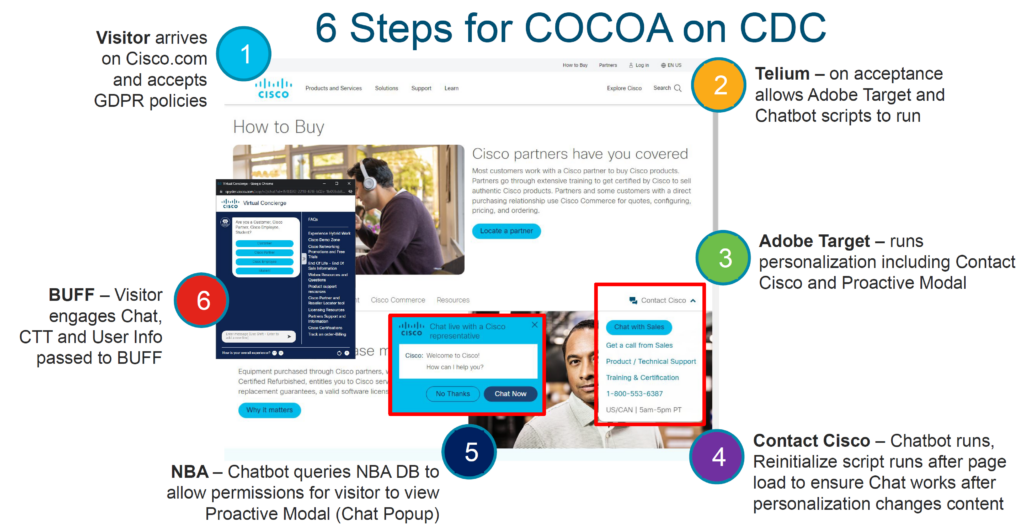This article is a highlight of my work at Experis.
In today’s digital landscape, businesses strive to provide seamless and personalized experiences to their customers. One area where this quest for excellence manifests itself is in the implementation of chat solutions. While it may seem like a simple concept on the surface, integrating chat functionality into enterprise websites and applications is a complex endeavor that requires the orchestration of multiple platforms and meticulous attention to detail.
The example we’re exploring today offers a glimpse into the inner workings of a chat implementation strategy, revealing the intricacies and challenges involved in delivering a top-notch user experience.

Hyper Personalization: The Key to Engaging Experiences
One of the central themes that emerge from the document is the importance of hyper personalization. Leveraging a variety of tools and platforms, such as Adobe Target, ensures that the chat experience is tailored to each user’s geographic location, language preferences, and entitlement level. This level of personalization is achieved through leveraging user IP lookup with services such as Akamai and Azure or fallback methods of identifying browser headers, enabling a localized and relevant experience to visitors from around the globe.
Integrating Multiple Platforms: A Choreographed Dance
Delivering a seamless virtual assistant for demand generation is not a solo act; it requires the seamless integration of multiple platforms through APIs and intricate data exchanges. The document highlights the intricate interplay between systems like Tealium or Adobe Launch, Voiceflow, and Salesforce, each playing a crucial role in enabling chat functionality, bot interactions, routing rules, and reporting.
For example, your tag management acts as a choreographer, ensuring that the chat function loads correctly after the user accepts the consent agreement. Routing rules, predictive analysis for proactive chat, and user profile management are handled at your CDP/Segment level based on customer, partner, or anonymous user values. Voiceflow or Live Person, is the star performer, responsible for the chat experience. Leads pass into your CRM such as Salesforce and your downstream systems feed out reports in tools such as Domo or Tableau to your leadership.
Behind the scenes, these tools all work in tandem to handle agent availability, queues, skills, and reporting, while Adobe Target contributes to the personalization efforts by tailoring the visual experience of content on the page to help drive engagement to your sales funnel.
Overcoming Challenges: A Continuous Pursuit
Despite the intricate architecture and meticulous planning, there are potential pitfalls and challenges that can arise during chat implementation. From ensuring user consent to managing personalization activities that may inadvertently disable chat, the process requires constant vigilance and troubleshooting.
Because of this it is important to document your key resources when it comes to providing guidance on who to contact for various aspects of chat implementation, such as content updates, script issues, routing rules, feature requests, and reporting requirements.
As businesses continue to raise the bar for customer experiences, the complexities of chat implementation will only increase. However, by embracing the power of hyper-personalization and seamlessly integrating multiple platforms through APIs, enterprises can deliver engaging and tailored experiences that resonate with their customers.
